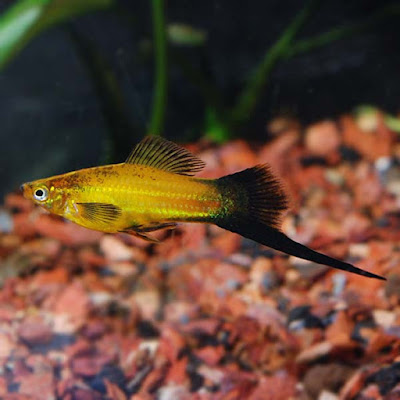Quilting can be an incredibly rewarding journey, but let’s be real—it can also have its fair share of “Oops!” moments.
If you’ve ever cut a piece too small, or your quilt top just won’t lay flat no matter how much you press it, know that you’re not alone. Every quilter, from newbie to seasoned pro, runs into a few snags along the way. The good news? Most mistakes are easily fixable with a little know-how and some patience.
1. Inaccurate Cutting
The Oops: Misaligned cuts can throw your whole quilt
design out of whack, making pieces that don’t fit together.
The Fix: Grab a sharp rotary cutter and a trusty
ruler. Double-check those measurements before you cut, and make sure your
cutting surface is steady. Applying even pressure along the ruler will save you
a lot of hassle later.
2. Wobbly Seams
The Oops: If your seams aren’t even, your blocks can
end up mismatched and/or not square.
The Fix: Stick with a consistent seam
allowance—usually ¼ inch. A quarter-inch presser foot can be a lifesaver, or
you can mark your needle plate for guidance. Don’t forget to press those seams
flat, whether open or to the side, to keep everything nice and smooth.
3. Incorrect Fabric Selection
The Oops: Fabrics that clash or don’t have enough
contrast can take away from the quilt’s overall impact.
The Fix: Take some time to plan your color scheme in
advance. Lay out your fabric choices and see how they look together. If you’re
feeling stuck, a color wheel or quilting apps can help you play with different
combinations before committing. I love taking a picture of my fabric choices and then changing it to a black and white photo. This accurately shows the light, medium and dark fabrics and helps you choose the right one.
4. Skipping the Pressing
The Oops: Skipping the pressing step can lead to
bulky seams and blocks that just won’t match up.
The Fix: Always press your fabric before cutting, and
press after every seam. Use a hot iron, but go gently—you want to press, not
iron. Sliding the iron back and forth can stretch your fabric out of shape. I use starch and a dry iron both to press before cuts and as I stitch.
5. Mismatched Points
The Oops: Points of triangles (or other shapes) that
don’t align can make your quilt look a little less polished.
The Fix: Pin precisely where the points should meet,
and slow down as you approach those intersections. If needed, adjust your seam
ever so slightly to make sure everything lines up perfectly.
6. Backing Fabric Too Small
The Oops: Running out of backing fabric before the
quilt is done? That can definitely throw off your finishing.
The Fix: Make sure your backing fabric is at least
4-6 inches larger than your quilt top on all sides. You’ll need that extra room
for the quilting process, especially if you’re using a long-arm machine.
7. Quilt Top Not Laying Flat
The Oops: If your quilt top is wavy or doesn’t lay
flat, it can cause problems down the line.
The Fix: Make sure your blocks are pieced and pressed
accurately. Double-check your measurements frequently to avoid any distortion,
and handle the quilt top gently when assembling to keep everything in place.
8. Puckering
The Oops: Fabric puckers while you’re quilting,
creating an uneven look.
The Fix: Basting is your best friend! Thoroughly
baste your quilt layers before quilting, whether you’re pinning, spraying, or
hand-basting. A walking foot can help evenly feed the layers through your
machine, and sewing slowly and steadily will prevent any puckering.
9. Running Out of Fabric
The Oops: There’s nothing worse than running out of
fabric mid-project!
The Fix: Always buy a little extra, especially for
key pieces. Keep your fabric organized and labeled, so you know what you’ve got
on hand. If you do run short, consider adding a similar fabric as an accent or
border to bring it all together.
10. Improper Binding
The Oops: Binding that’s too tight, too loose, or
uneven can take away from the overall look of your quilt.
The Fix: Measure your quilt carefully before cutting
the binding strips. Attach the binding with even stitching, and take special
care at the corners to create clean, mitered edges.
11. Overstretching the Fabric
The Oops: Stretching fabric while cutting or sewing
can cause distortion, leading to wonky blocks.
The Fix: Be gentle! Use starch if you need to
stabilize the fabric, and always cut with the fabric lying flat on a stable
surface. Watch out for bias edges—they’re especially prone to stretching.
12. Inconsistent Quilting Density
The Oops: Quilting that’s too dense in some spots and
too sparse in others can make the quilt feel unbalanced.
The Fix: Plan your quilting design ahead of time,
aiming for consistency across the quilt. Practice on a small piece to get a
feel for the spacing, and adjust as needed before starting on your main quilt.
Avoiding these common mistakes can help you create a quilt that you’ll be proud of. Each project will become smoother and more enjoyable as you gain experience. So, embrace the process, learn from each hiccup, and, most importantly, happy quilting!
Go make something extraordinary.






































